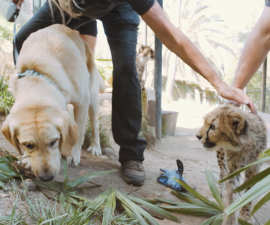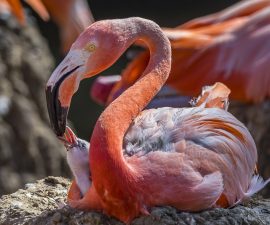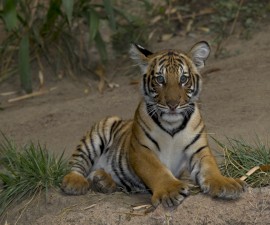BY Eston Ellis
Photography by Ken Bohn
Conrad Prebys Australian Outback at the Zoo has two new residents, and they’re already getting attention from guests: Tasmanian devils McLovin, described as a “laid-back” male; and Quirindi, a “shy” female. The pair arrived in November 2017 from Australia’s Taronga Western Plains Zoo. They recently completed their 30-day quarantine and already have admirers. “So many people I meet don’t even realize Tasmanian devils are real animals that actually exist—they’re not just a cartoon character,” said Katie Tomlinson, senior keeper. “The San Diego Zoo is one of only six zoos in the US that has Tasmanian devils right now. So, we have a great opportunity to educate people about these unique and endangered carnivorous marsupials.”
Found only on the island of Tasmania, Tasmanian devils live in eucalyptus forests, coastal scrublands, and farming areas. The island’s top carnivore, the Tasmanian devil is a nocturnal feeder that may travel up to 10 miles in pursuit of food—usually carrion (dead animals), but occasionally live prey, such as birds or small mammals. They got their “devil” name from their vocalizations, which early European settlers found frightening, including fierce-sounding growls, snarls, and high-pitched shrieks the animals make to establish dominance, usually when they are feeding together on a carcass.
“Despite the name, Tasmanian devils are not vicious—although they will defend themselves,” Katie said. “They are actually quite shy and elusive.”
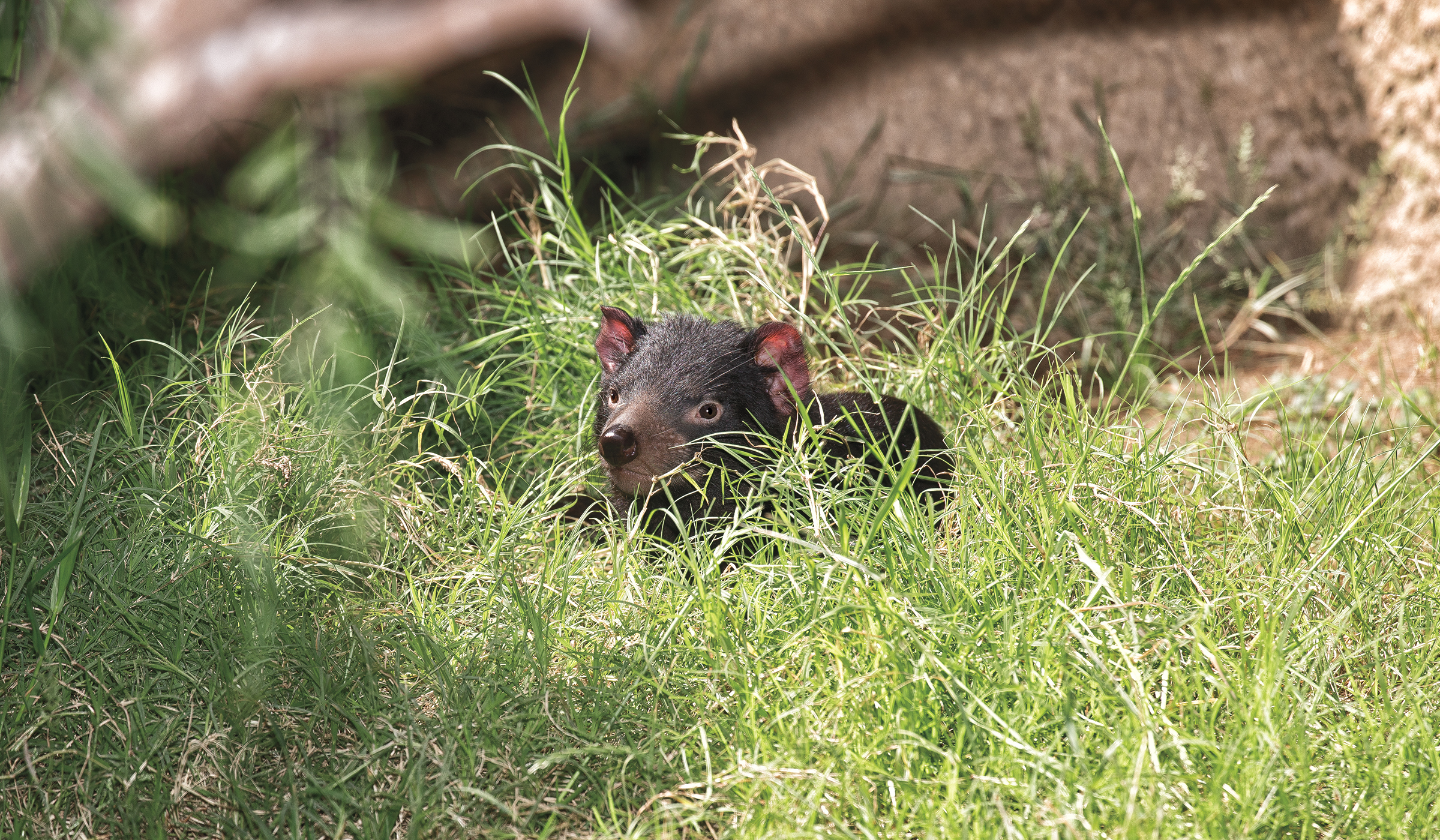
On Behalf of the Devil
The San Diego Zoo has partnered with Taronga Zoo in an effort to help people learn more about this unusual animal, and to inspire support for conservation programs to help this endangered species survive. Currently, Tasmanian devil populations in their native habitats have decreased by more than 80 percent because of the devastating spread of a rare contagious cancer: Devil Facial Tumor Disease (DFTD). The disease—limited, so far, to Tasmania, and not contagious to humans—is spread when devils bite each other while feeding together or mating. Infected animals usually die within six months to a year. Researchers are working on a vaccine to prevent the spread of the disease among the Tasmanian devil populations.
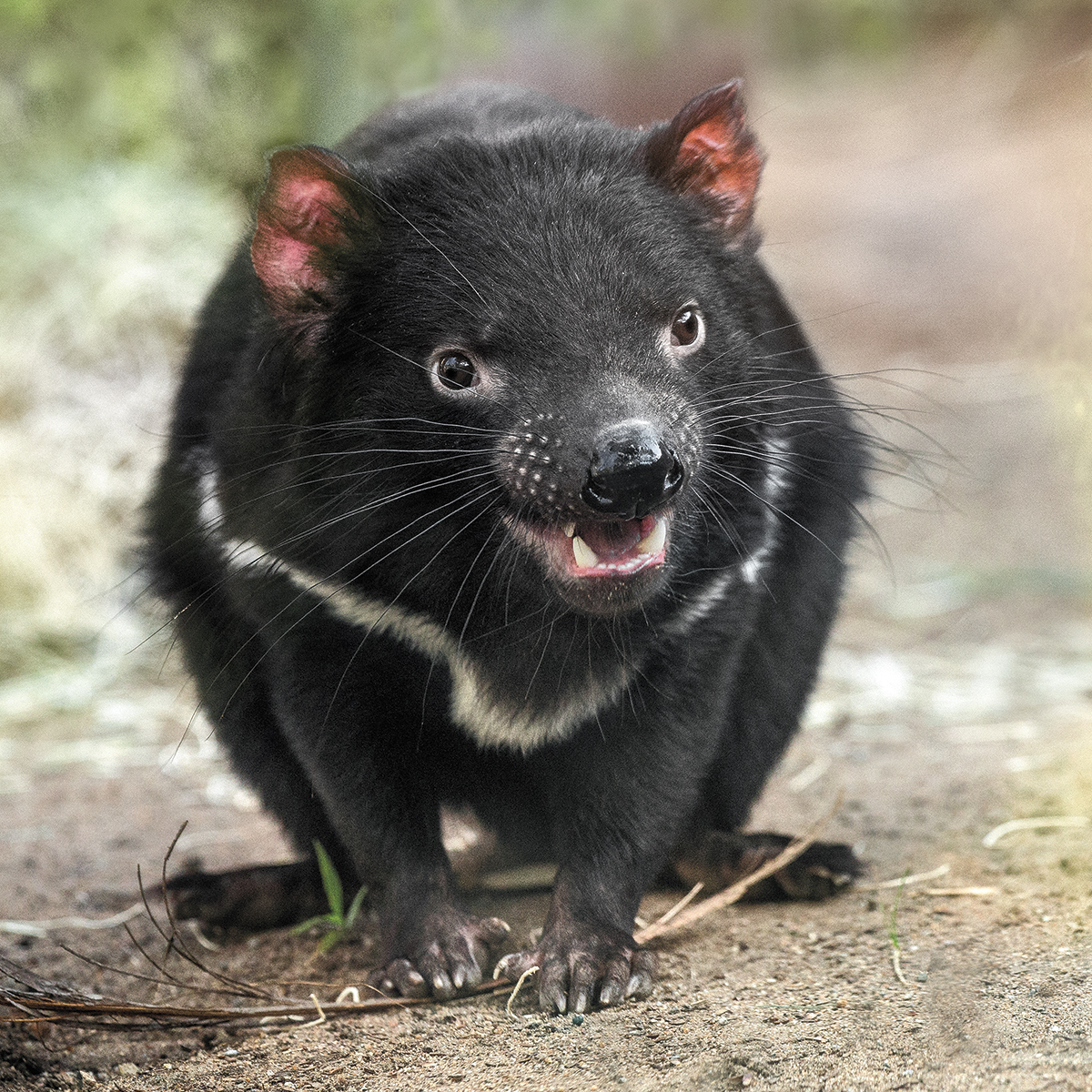
MAKING HERSELF AT HOME
Quirindi is less gregarious than male Tasmanian devil McLovin, but this confident female has quickly made herself at home at the Zoo.
San Diego Zoo Global, along with research institutes and other zoos, supports the Save the Tasmanian Devil Program, a government initiative established in 2003 to respond to the threat of DFTD. Its mission is to combat the epidemic to ensure the survival of the Tasmanian devil and help native populations recover. As ambassadors for their species, McLovin and Quirindi are playing an important role in the effort to support Tasmanian devil conservation. As San Diego Zoo guests learn more about Tasmanian devils, they can also discover what is needed to help these remarkable animals.
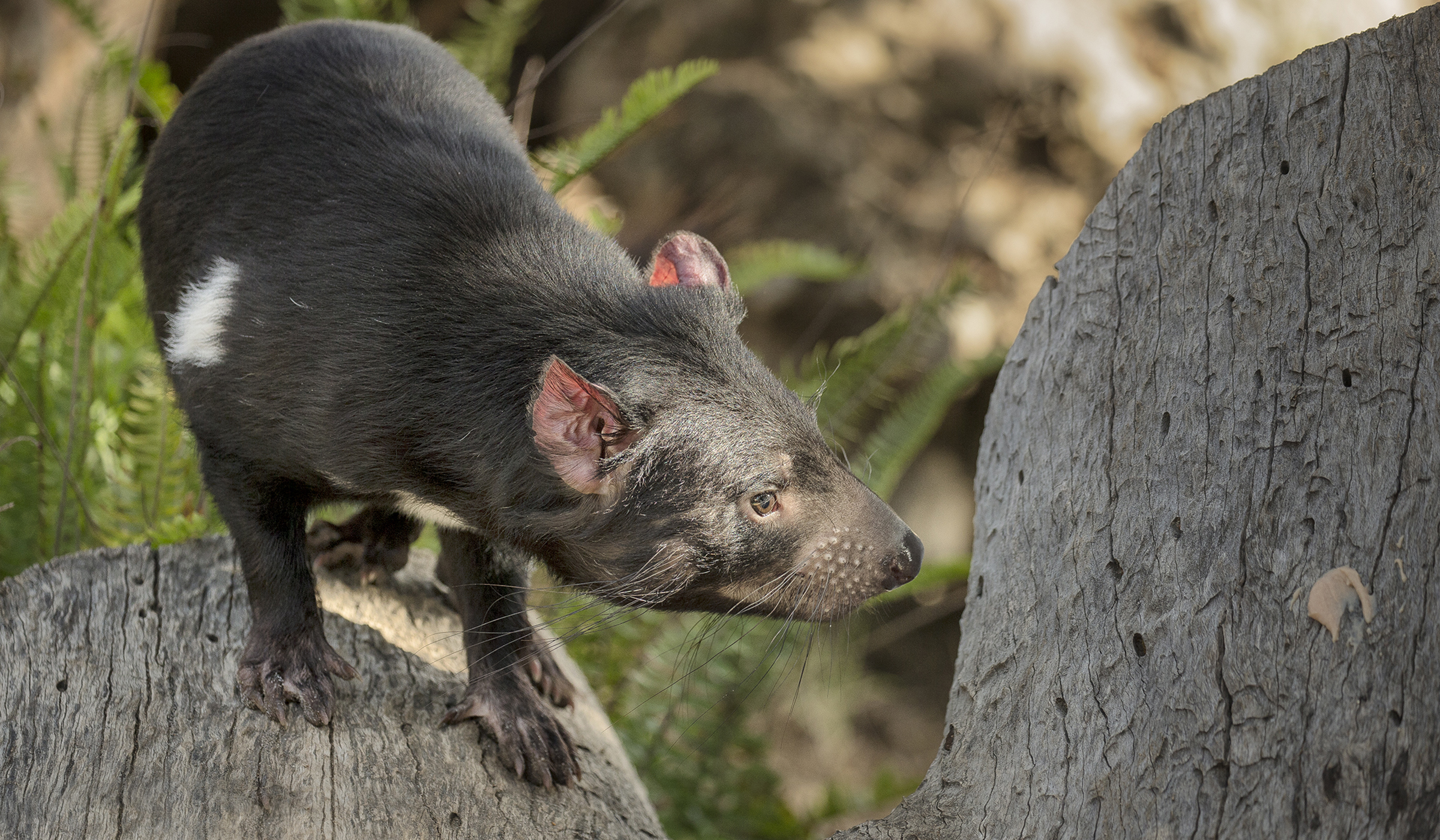
How They Got Here
Last year, in preparation for the Tasmanian devils’ arrival, Katie traveled to Australia and trained for several weeks with the marsupial team at Taronga Zoo. “I was a koala keeper for my first six years at the San Diego Zoo, so I felt right at home,” she said. “They were so accommodating and hospitable to me while I was learning everything I could about Tasmanian devils, to bring that knowledge back here.”
McLovin and Quirindi came back with Katie, after the animals completed a one-month pre-flight quarantine at Taronga Zoo. Their plane ride to the US took 14 hours, and pre-flight preparations added 3 more. The goal was to make sure McLovin and Quirindi were comfortable in their crates and temperature-controlled surroundings during the flight, and then get them into their new home at the San Diego Zoo as quickly as possible. “The head keeper met up with me at LAX when we arrived from Australia,” Katie said. “It was about a 24-hour process from start to finish, but it was great to see how they immediately got comfortable in their exhibit.”
When they arrived at the Zoo, the two devils were able to do their post-flight quarantine right in their exhibits, since they would not initially have contact with any other animals—and keepers took extra precautions to keep out any potential contaminants. “It was much better than having them off in another facility,” Katie said. “Both McLovin and Quirindi had their post-shipment exams about a month and a half after they got here, and everything went great.”
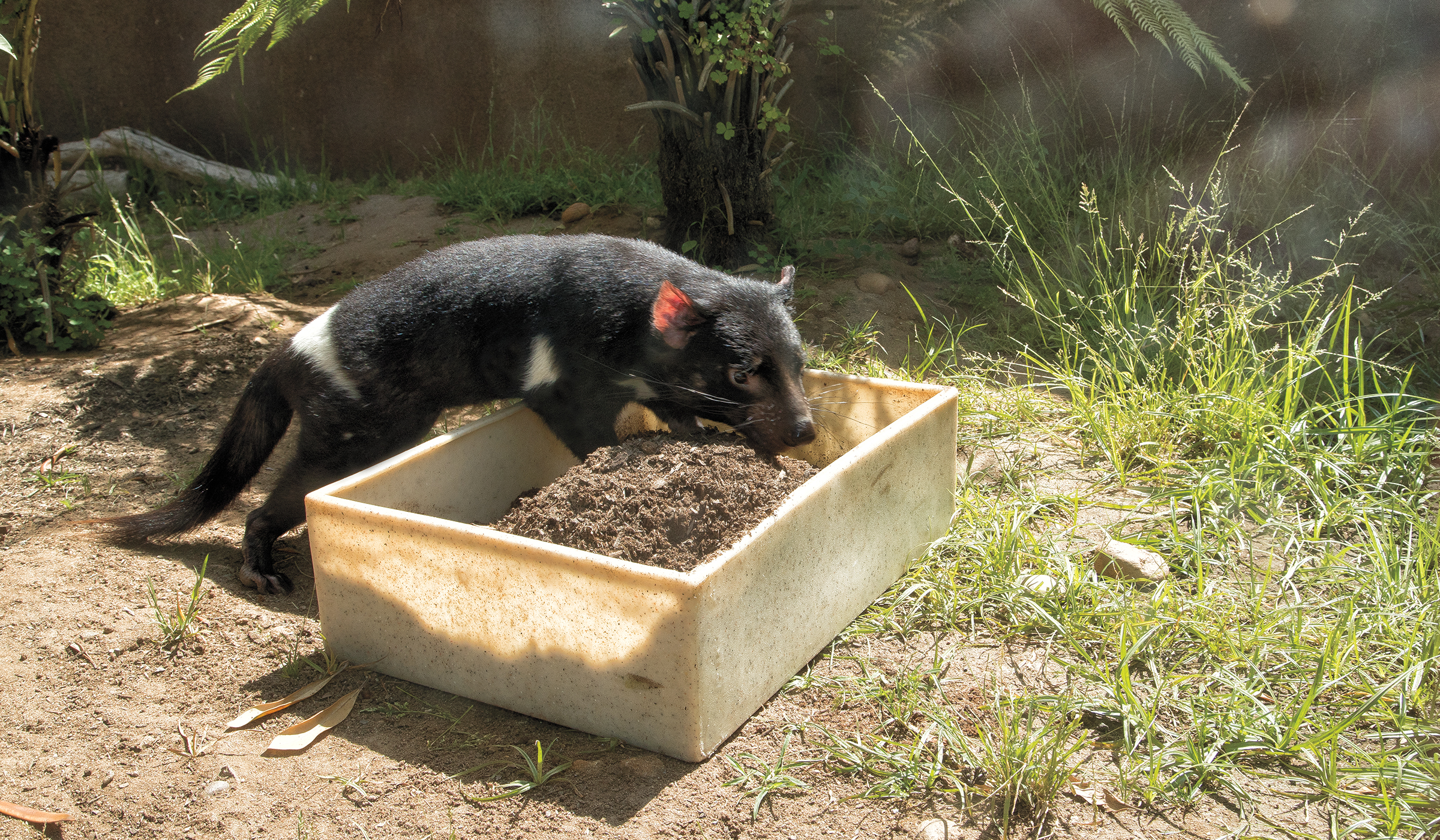
Getting to Know You
“There are so many things most people don’t know about Tasmanian devils,” Katie said. “For instance, as a marsupial, the females carry their young in a pouch, like a kangaroo. Tasmanian devils are the largest carnivorous marsupial on Earth, and they have tremendous jaw pressure, which allows them to tear through flesh and crush bone—eating meat, bones and all—as they feed on a carcass.”
At the Zoo, the Tasmanian devils—McLovin and Quirindi, and Debbie, who came to the Zoo in 2013—each have their own enclosure in the Zoo’s Conrad Prebys Australian Outback. In their native habitat, Tasmanian devils are naturally solitary animals that come together mainly for meals or mating. “The way their Australian Outback exhibit is set up, each devil’s space is separate,” Katie said. “We rotate them, so they are continually exploring a new space with all new smells.” The enclosures have plants for the devils to hide in, extra mulch to dig around in, and a tucked-away den to rest in. “They like to be in dark places,” Katie said. The devils get different meat items each day, which may include rabbit, rats, mice, fish, and beef, along with bones. “In their native habitat, they often eat carrion, and they never know what they might find from one day to the next. We try to simulate that variety. We also scatter their food—Tasmanian devils have a really good sense of smell, so we encourage them to use it to seek out food.”
Occasionally, the devils get whole prey items, to allow them to use their strong jaws and teeth. The keepers also provide them with a variety of enrichment items, including hay bedding that is moved from one Tasmanian devil’s enclosure to another. “They like a lot of scents, and those offer some great smells.” Additional enrichment items include boxes and papier mâché to tear up, and substrates like piles of dirt or leaves to dig in and bury food items.
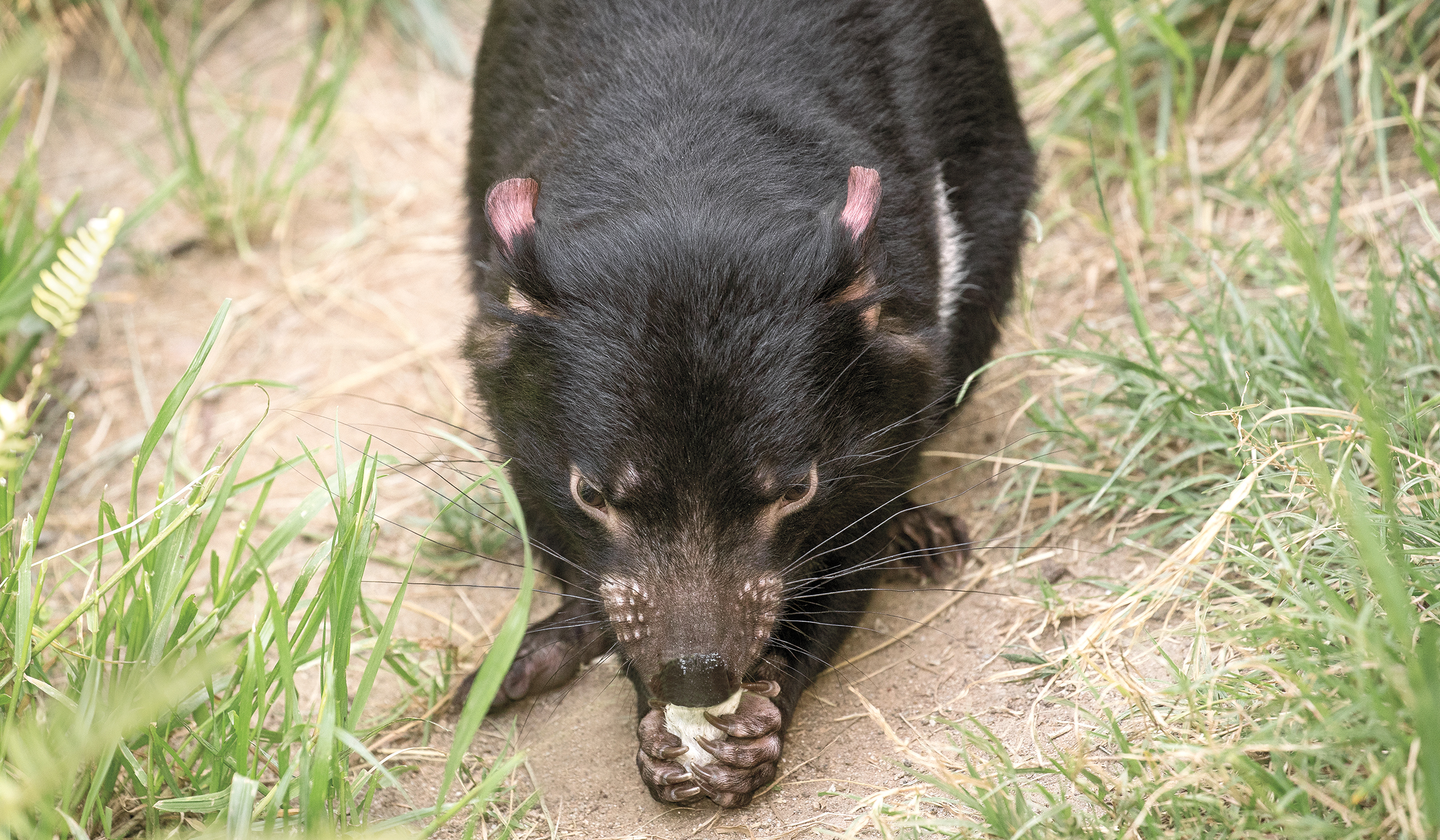
Arf!
Tasmanian devils have their own way of saying hello, which keepers call an “arf,” because that’s what it sounds like. When they first see keepers each day, McLovin and Quirindi greet them with an arf. “McLovin did it right away,” Katie said. “Quirindi has gradually started to do it.” Another vocalization the devils sometimes make is a “chuff,” which sounds something like a sneeze. They make that sound when they are expressing wariness or caution.
The two newcomers have very different personalities. “McLovin is more outgoing, and lives up to his name—which, by the way, we didn’t give him, but visitors love it,” Katie said. “He is so personable with keepers, and he’s always eager to be where we are.” Quirindi is less gregarious and spends more time in her den, “but she’s mellowing a little, so we’re getting a better idea of what her personality is now.”
Tasmanian devils are nocturnal, so don’t be surprised if you see them sleeping or relaxing in the sun during the day. “They are much more active during evening, and they are especially active at feeding times,” Katie said. This summer’s Nighttime Zoo—taking place through September 3—offers longer Zoo hours, giving you more chances to see McLovin, Quirindi, and Debbie at their most active, and learn more about Australia’s fascinating, endangered Tasmanian devils.


